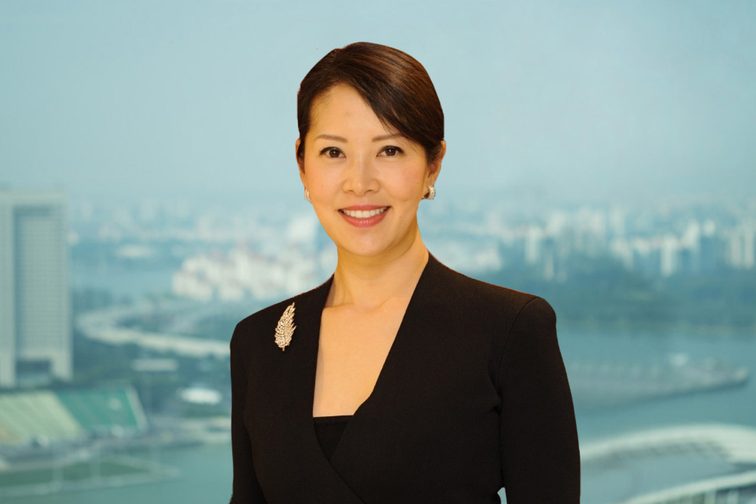Powering Asia’s next growth chapter
With deep sector expertise and strong local networks, we are enabling clients to scale in the region’s most dynamic industries.

This interview with Stella Choe, our Global Head, Corporate Coverage, Corporate and Investment Banking, was originally published in the The Business Times (the article title has been revised to fit SC.com editorial guidelines).
Asia’s rapid innovation in recent years is the foundation upon which its future will be built, said Standard Chartered’s Stella Choe.
As global head of corporate coverage at Standard Chartered’s corporate and investment banking arm, Choe believes that recent developments in key sectors are set to position the region as a leader in the global economy – and corporate banking has a large part to play.
To Standard Chartered, enabling Asia’s growth means combining sector-specific knowledge with local insights to create strong strategic partnerships with clients. “Today’s clients aren’t just seeking financial products,” said Choe. “They want forward-thinking partners who can help them navigate volatility, evolving regulatory landscapes and structural shifts within their industries.”
She believes this shift represents an opportunity for banks to redefine their value propositions. For Standard Chartered, this approach places emphasis on offering solutions across a range of sectors.
Asia’s next big sectors
Certain sectors – such as pharmaceuticals and biotechnology – have accelerated the pace of innovation in Asia in recent years, Choe explained. These sectors have attracted demand for both capital funding and deeper knowledge-based solutions, prompting banks to evolve to meet these needs.
“We support these high-growth sectors with end-to-end solutions,” Choe said. The bank’s offerings include structuring financing solutions, risk management and helping clients enter new markets. “What’s important is not just the capital we provide, but the connectivity and insights that come with it. We’re also delivering intellectual capital, helping our clients make informed, forward-looking decisions in fast-moving environments.”
In other sectors such as electric vehicles and new energy, she said Asia’s capabilities already stand out as global leaders, as the region witnesses strong investment into infrastructure building. Such investments range from battery value chains to renewable energy projects, she added.
However, the future of Asia truly lies within technological and digital transformation, Choe said, driven by cross-border flows and foreign direct investment across economies.
Artificial intelligence and robotics, for instance, have the potential to surge within the region’s economies as various governments and corporations continue to spend heavily on innovation. “In China, for example, we are already witnessing the integration of humanoid robots and autonomous drones in areas such as logistics, public services, healthcare and more.”
As high-tech innovation becomes widespread, its accompanying infrastructure is likely to experience high demand, Choe believes. For instance, she noted that advanced manufacturing will become an important growth driver within Asian economies, as the sector is critical to the development of industries such as electronics, automotives and telecommunications. Likewise, an increasing demand for data centres due to the rise of cloud computing has witnessed corresponding growth in countries such as Singapore, which stands out as a key hotspot in the global data services industry.
Strong growth in these sectors is likely to define the longer-term future of the Asian economy, Choe believes.
“Asia is set to not only be a major consumer of these technologies, but also a leader in their development and deployment on the global stage. The next decade will undoubtedly see the convergence of these sectors to shape a more connected, digital and efficient future for Asia and the rest of the world.”
Cross-border investments in a fragmented world
Still, uncertainty surrounding the changing dynamics of the global economy has taken its toll on supply chains. US trade policy continues to remain unpredictable, with US President Donald Trump’s tariffs and the threat of weakening trade flows sparking fears that the world economy is becoming less globalised and more regionalised.
“There’s been a clear shift towards repositioning supply chains,” Choe noted. “Clients are looking at having operations closer to end-markets, or creating parallel supply chains across Asia, the Middle East and even parts of Africa.”
Nevertheless, she believes that such changes in cross-border investment patterns merely represent corporations taking more targeted approaches to such investments – instead of signalling a decline in globalisation. “Clients still need access to global markets, talent and capital.”
As investors seek to rebalance between efficiency and resilience in volatile markets, Choe noted that Standard Chartered’s ability to provide solutions can become even more critical to its clients. “Our role as a trusted banking partner is to help bring clarity amid uncertainty, and to support clients as they navigate complex – and sometimes fragmented – global dynamics, without losing scale or opportunity.”
One such opportunity lies along the China-ASEAN corridor, where foreign direct investments from China have increasingly flowed into markets such as Vietnam, Malaysia and Indonesia in recent years. “Chinese companies are deepening their presence in South-east Asia, using Hong Kong and Singapore as gateways to access ASEAN markets.”
Standard Chartered has chosen to align its “corridor strategy” with such shifts in trade patterns, leveraging its strong networks within ASEAN markets to enable clients to capture opportunities as they arise.
This approach typifies how the bank has offered value to its clients, Choe noted. Whether through sector specialisation or network expertise across Asian markets, Standard Chartered has sought to create value for clients in response to changing business environments.
“As a network bank, we ensure that wherever a client operates, we’re there with them, providing consistent support, insights and value-added solutions.”
Why Chinese dividend stocks are worth considering for 2026
The stocks have consistently delivered attractive returns over the past five years – making them a good portfoli…